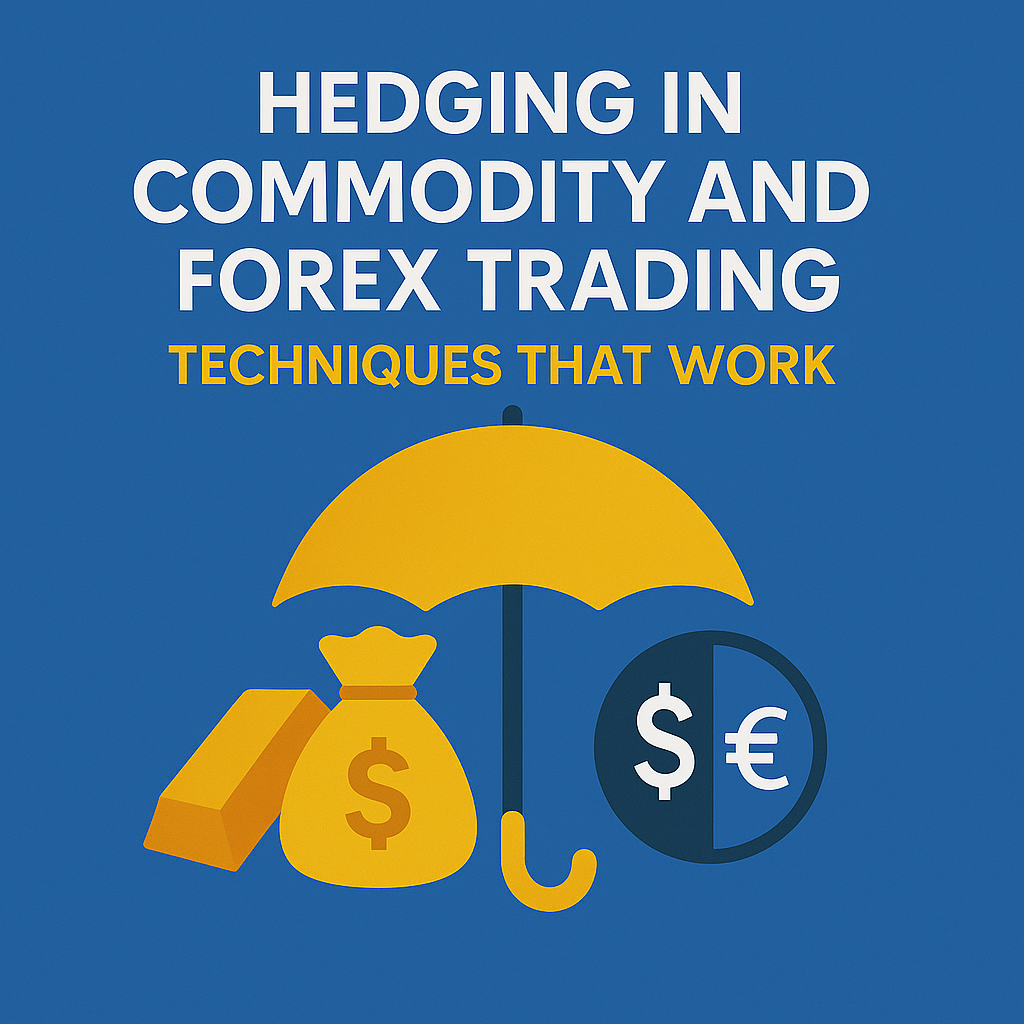Trading commodities like gold or crude oil, or currencies like USD/INR or EUR/USD, can be exciting — but also highly volatile.
Prices swing based on global news, inflation data, interest rates, and even geopolitical tensions.
So how do smart traders protect themselves from sudden losses?
One word: hedging.
Whether you’re an experienced trader or a beginner trying to stay safe in wild markets, this guide will explain how hedging works in commodities and forex, and give you techniques that actually work.
💡 What is Hedging in Simple Terms?
Hedging is like buying insurance for your trades.
It’s a strategy where you take a second, opposite position to reduce the risk of loss from your primary trade.
In commodities and forex, hedging allows you to:
Lock in prices
Offset potential losses
Sleep better when the markets get choppy
🔐 You don’t always need to make more — sometimes, you just need to lose less.
🛢️ Hedging in Commodity Trading
📉 Example 1: Gold Futures Hedge
Suppose you’ve bought gold at ₹60,000 per 10g, expecting prices to rise. But there’s political tension and market uncertainty.
To hedge:
You sell a gold futures contract at the same time.
If gold falls, the futures trade gains, offsetting your spot loss.
This technique is commonly used by:
Gold traders
Jewelers
Exporters/importers
🔧 Other Techniques:
Options on commodities (buy a Put to protect a long position)
Spread trading (hedge two commodities like crude oil vs. heating oil)
💱 Hedging in Forex Trading
Forex is fast, liquid, and global — but it’s also vulnerable to sudden moves from:
Interest rate hikes
Inflation reports
Global conflicts
Central bank announcements
📉 Example 2: USD/INR Hedge
Imagine you have a long position on USD/INR, but the RBI is about to make a policy announcement.
To hedge:
You open a short position in a correlated pair (like EUR/INR)
Or you buy a Put option on USD/INR
If the dollar weakens, your hedge will gain value.
🔧 Other Techniques:
Forward contracts (lock in currency rates)
Hedging via correlated pairs (hedge USD/INR using USD/JPY)
Options-based hedging (buying call/put options for coverage)
🧠 When Should You Hedge?
Hedging isn’t for every trade — but it’s crucial during these situations:
Before major economic announcements
During high volatility periods
When holding overnight or weekend positions
For large positions or long-term trades
When markets feel unpredictable
✅ Practical Hedging Tips for Beginners
📉 Start small — hedge 25–50% of your position
⏳ Watch timing — hedge before volatility, not after
🧪 Use demo accounts to practice without real risk
🛠️ Choose the right instrument — futures, options, or correlated pairs
📚 Stay informed — follow economic calendars and news
🏁 Final Thoughts
Hedging isn’t about avoiding risk. It’s about managing it wisely.
Whether you’re trading gold, crude oil, or foreign currencies, using hedging techniques can help you:
Trade with more confidence
Reduce emotional decisions
Protect your capital during turbulent times
So don’t wait for the market to surprise you — hedge your bets and trade smarter.




